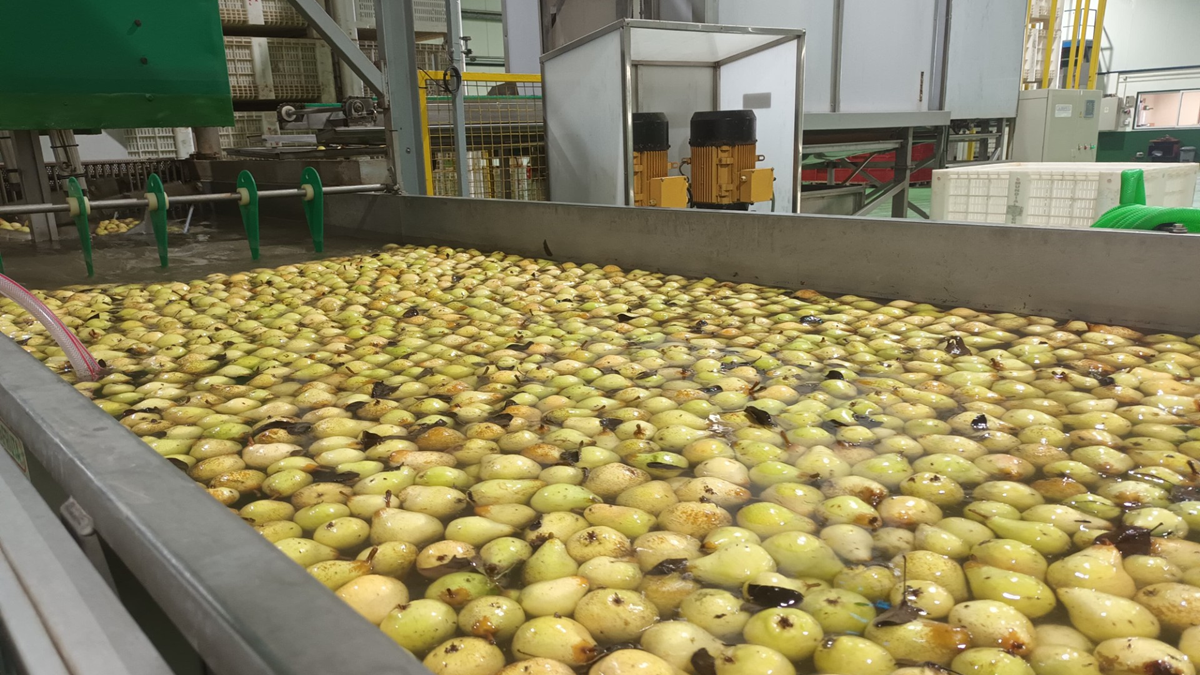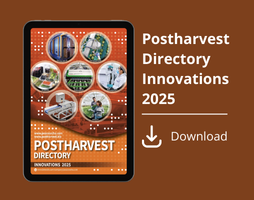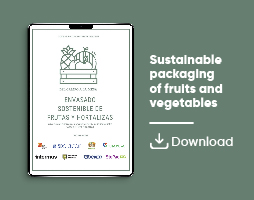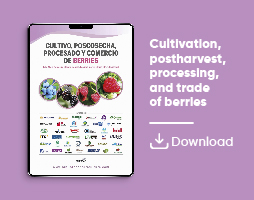Actualidad
Photodynamic Inactivation, a green postharvest technology
Paper by L. Jernej et al. about the effects of chlorophyllin and sunlight against Penicillium digitatum
Green mold, induced by the fungal phytopathogen Penicillium digitatum, is one of the major causes of postharvest losses in citriculture. To minimize mold infections oranges are treated harshly with fungicides, edible coatings, or physical treatment, leading to evolving resistance, low consumer acceptance, or reduced crop quality, respectively.
Photodynamic Inactivation, an ecofriendly alternative
Photodynamic Inactivation (PDI) might represent an ecofriendly alternative for treatment of P. digitatum spoilage, especially if based on natural photosensitizers.
Here, we introduce PDI using three formulations consisting of different concentrations of the natural photosensitizer sodium magnesium chlorophyllin (Chl), Na2EDTA as cell-wall permeabilizing agent and a surfactant for postharvest treatment of P. digitatum.
As experimental model systems
(i) mycelial spheres in liquid suspension,
(ii) fungal spores or
(iii) a newly developed experimental setup using orange peel plugs are employed.
Illumination was done by an LED device with a main wavelength of 395 nm (106 J cm−2).
The lowest concentrated photosensitizer formulation (219 µM Chl) effectively photokilled samples of model systems (i) and (ii) with 100% and 62.5% dead samples, respectively.
Orange peel plugs of model system (iii) were best disinfected using the mid-concentrated formulation (475 µM Chl, 70% dead samples).
Additionally, model systems (ii) and (iii) were treated with the mid-concentrated formulation and illuminated by sunlight.
Eradication of P. digitatum liquid spore culture (ii) was enhanced when illuminating with sunlight (300 J cm−2).
Further, a complete disinfection of orange peel plugs (iii, 100% dead samples) was achieved with sunlight (300 J cm−2).
To evaluate the antioxidant scavenging activity post-PDI treatment with LED light (395 nm, 106 J cm−2) a DPPH assay was performed on model system (iii).
The treatment with the mid- and low-concentrated Chl formulations and LED light showed little to no change in DPPH scavenging activity when compared to the not-illuminated controls.
Concisely, with this study we demonstrate that PDI using Chl-based photosensitizer formulations has an in vitro antifungal effect against P. digitatum, without altering the antioxidant scavenging activity of the fruit.
Different model systems, to mimic the different stages of green mold infection, were effectively treated with Chl and sunlight.
Fig. 4 of the original paper - From: Chlorophyllin and sunlight against Penicillium digitatum: exploring Photodynamic Inactivation as a green postharvest technology in citriculture
Background
Citriculture is a major global industry. In 2022, more than 140 countries produced over 76 million tons of oranges on approximately 4 million hectares of land. The two leading producers, Brazil and the USA, export a substantial quantity of their yields [1].
Besides their considerable economic importance, oranges also possess significant nutritional value, attributed to their high concentrations of antioxidants including vitamin C [2].
However, various phytopathogens adversely affect the quality and shelf life of orange produce, particularly in the postharvest period [3].
Penicillium species were identified as contaminator of citrus fruits as early as 1932 [4]. Spoilage caused by postharvest fungal infections are estimated to account for one tenth to one third of the wastage in citriculture [5].
The most severe infection affecting oranges is green mold, caused by Penicillium digitatum, which can result in postharvest losses exceeding 90% in subtropical and tropical climates.
The peel, a protection
Usually, the intact peel protects oranges from P. digitatum spores which typically reside on the fruit. But, when the peel is wounded by wind, hail, or imprudent postharvest storage, spores can enter at the injured site. After forming a soft watery spot at the infection area, P. digitatum grows into white mycelium. When conditions are favorable for the fungus, the mycelium will then become olive-green and again produces spores. Through wind and water, the spores are carried to nearby fruits, initiating the infection process all over [6].
Current prevention strategies
Current prevention strategies of green mold include the broad application of synthetic fungicides [7].
However, this led to evolvement of resistant P. digitatum strains, complicating the postharvest treatment of citrus [8, 9]. Multiple fungicide resistance mechanisms have been identified in P. digitatum strains. Isolates from Chinese packing and storage facilities have demonstrated resistance to the quinone outside inhibitor azoxystrobin [10]. Furthermore, Chinese isolates from storage facilities have shown resistance to imazalil, a sterol biosynthesis inhibitor [11]. A study from the United States found that packaging-house isolates exhibited resistance to several fungicides, including thiabendazole, sodium ortho-phenylphenate, and pyrimethanil, all of which are commonly used during citrus packaging [12].
Besides the induction of resistance, the intense application of chemical fungicides reduces the consumer’s trust in citrus fruits and has consequences on the environmental integrity [13, 14]. Postharvest residues of pesticides were found in all layers of citrus fruit with the highest fungicide concentrations in the peel.
Depending on the chemical properties of the pesticide, traces remain after washing the fruit with tap water and even after fruit juice processing [15]. Safer, and more environmentally friendly approaches to combat green mold infections are not frequently employed.
Plant extracts such as flavonoids or polyphenols, for example, are used as antifungal agents to combat Penicillium molds, but their mode of action is yet mostly unknown.
To prolong the shelf-life of citrus fruit also ionizing (gamma, X-rays) and non-ionizing (UV) radiation have been tested, yet the costs are immense and there is a high distrust of consumers against radiation treatments [16, 17].
Consequently, new strategies to combat postharvest P. digitatum infections must be integrated into routine citrus farming practices.
New strategies
Photodynamic Inactivation (PDI) is well described as a possible microbial control and preservative of foodstuff [18].
Especially, the naturally derived photosensitizer (PS) and approved food additive sodium magnesium chlorophyllin (Chl) was previously studied as decontamination agent of fruit [19] and additive for food packaging [20, 21].
The plant protection application of PDI using Chl-based PS was expounded by our working group with showing its potential against phytopathogenic bacteria [22], fungi [23] and Drosophila [24].
Widening the application spectrum of PDI based on Chl to postharvest treatment of citrus
To bridge the gap between the food technological approaches and agricultural uses of PDI, we here aim at widening the application spectrum of PDI based on Chl to postharvest treatment of citrus. This would not only improve the protection of the fruit in terms of quality, but also increase shelf-life and the value of the produce.
In this study, we examine three ready-to-use formulations with different Chl concentration, ethylenediaminetetraacetic acid disodium salt dihydrate (Na2EDTA) as cell-wall permeabilizing agent and a surfactant (alkylsulfosuccinate) are tested to photoinactivate P. digitatum.
In vitro experiments on three different Penicillium model systems shall be employed: (i) mycelial spheres, (ii) liquid spore cultures, and (iii) a newly developed experimental system consisting of orange peel plugs. For illumination, either LED light (395 nm) or natural sunlight was tested.
Main picture is the graphical abstract
Source and access to the complete paper
Chlorophyllin and sunlight against Penicillium digitatum: exploring Photodynamic Inactivation as a green postharvest technology in citriculture
Linda Jernej, Jun Liu, Michael Fefer & Kristjan Plaetzer
Photochemical & Photobiological Sciences, March 2025
https://doi.org/10.1007/s43630-025-00706-x











